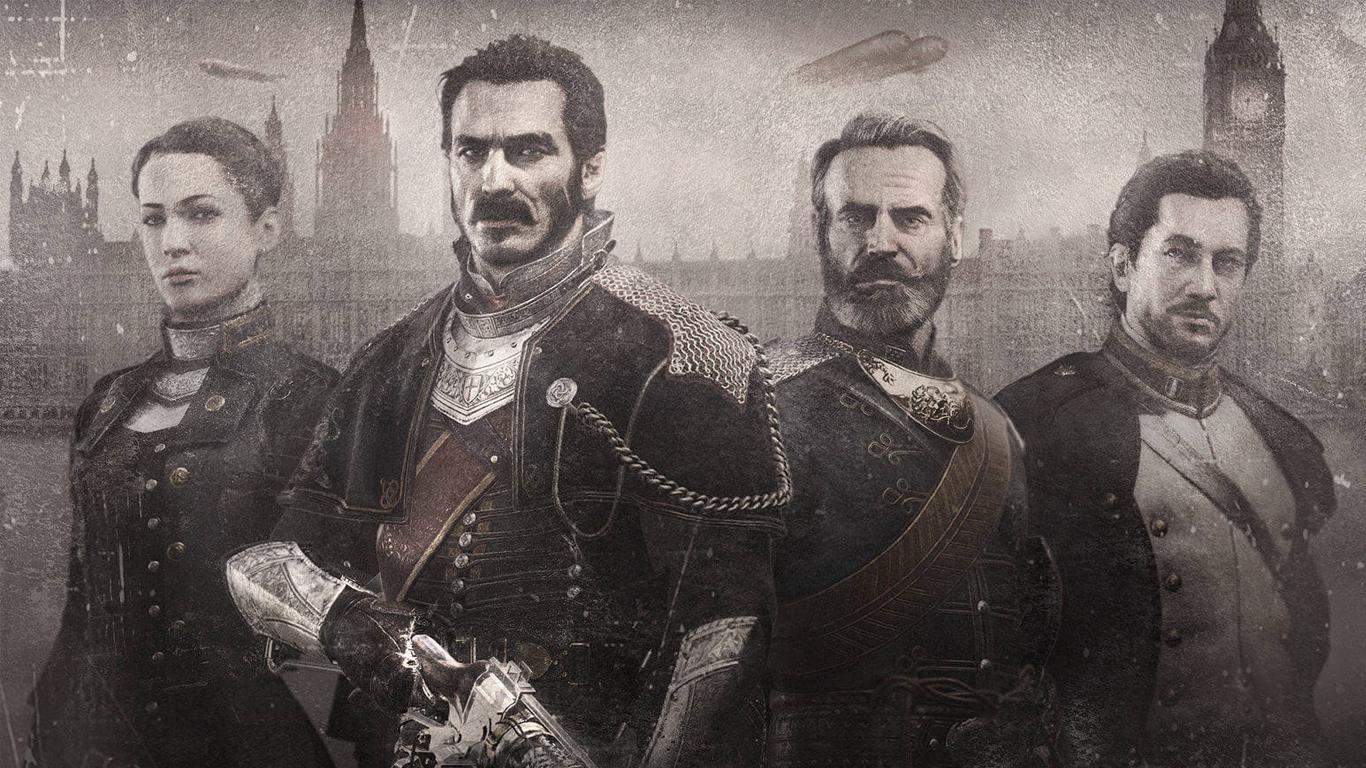You can trust VideoGamer. Our team of gaming experts spend hours testing and reviewing the latest games, to ensure you're reading the most comprehensive guide possible. Rest assured, all imagery and advice is unique and original. Check out how we test and review games here
For a title desperate to blur the lines between film and games, it’s perhaps odd that the cinematic masterpiece The Order most recalls is Zoolander. Specifically, its eponymous hero/idiot’s pre-revelation cry of “Did you ever think that maybe there’s more to life than being really, really, really, ridiculously good looking?” In The Order’s case, the answer is ‘no’.
In fairness to the team at Ready at Dawn, The Order isn’t bad. And it is really, really, really ridiculously good-looking. Other games have visual ‘wow’ moments, stitched in at opportune times, carefully controlled and orchestrated. The Order does not have these instances, because the entirety of it is one single, rolling wow moment.
It’s a monument to the intersection where exceptional programmers and talented art directors meet. Minimal aliasing and intricate texture and lighting work combine with superb costume and environment design to build a world which feels as solid and cohesive as it looks spectacular. It boasts an attention to detail that borders on obsessive: from the stitching on Sir Galahad’s gloves to the skyline of Westminster, every visual element is geared towards authenticity and world-building. You’ll grab people from other rooms to come and see it. It’s what the Share button was built for.
It’s an exclusive title that finally looks as good as those ‘target render’ bullshots we were all fed around the launch of the PlayStation 3. It’s also as obviously flawed as it is technically accomplished.
Billed and promoted as a cover shooter, The Order spends a lot of its time instead pursuing grander ambitions, aiming to envelop players in its steampunk world of modern-ish knights of the round table battling internal strife, technological and sociopolitical advancement, a rebellion and, erm, werewolves. But it’s so committed to telling you this story that it often wrests control of the experience from the player just as they’re getting into its world, the gaming equivalent of someone talking over the movie.
The early going is glacially paced, constantly interrupting proceedings to drop in an expository cutscene, expanding its beloved plot’s intrigues and conspiracies. Actually, that’s rather unfair. Spend any amount of time with The Order and it appears you are in some ways actually interrupting it, so in love is it with its lore and its characters. For long stretches the meagerest form of interactivity is offered: opening a door, pushing a cart. It’s meant to distract from an easily visible truth, which is that The Order plays itself. Instead, these scraps of gameplay merely highlight it. You’re playing as a noble knight, but in actuality you’re a glorified cameraman, moving into position for the next lovingly-rendered shot.
When it finally relents and enables players to get down to shooting things (worryingly infrequent, for a shooting game), The Order improves dramatically. But even that is a backhanded compliment, as combat is, for the most part, merely functional. Lovely touches like adaptive cover aiming, where Sir Galahad will naturally adjust his angle of fire when hidden, and solid entry/exit from cover are undermined by the fact that there’s little guile here, no real excitement.
Your human foes come in two main forms, each as disposable as the last: normal goon, and more dangerous shotgunner. That’s about it. You’ll occasionally fight werewolves, but all that means is you’re either shooting them as they run in a straight line at you, or engaging in a kind-of QTE that appears to allow player agency but is, essentially, just Simon Says…Knife Fight!
Enemy AI isn’t stupid, but then neither is it noteworthy. Cover is plentiful, and the arenas you duke it out in are built to be used deftly. But it’s too easy to mow rebels down in rows, occasionally diving out of the way of grenade spam. Weapons fare better, sometimes boasting interesting secondary fires, and often feeling chunky and powerful, but when your enemies are so uninspiring, it barely matters.
There is little invention on show, no risk-taking, nothing along the lines of Gears of War’s active reload, which borders on genius and needs to be ripped off more. The Order’s lack of both enemy diversity and mechanical intricacy means its gunplay tires quickly. (As an aside: Ready at Dawn CEO Ru Weerasuriya told me the dev team would want to add something akin to active reload only if it could make it ‘better’. It’s a strange sentiment, considering that a) it doesn’t need improving, b) it would have bettered the game, and c) The Order is built from mechanics, including secondary fire and Red Dead-style slo-mo gunishment, that are done far better elsewhere.)
The Order is all show and no go. But it’s not a total disaster – and that, perhaps, is the worst part of it all. Its interpretation of Victorian London has a fidelity that is unmatched on consoles, a dingy beauty in its micro and macro elements. Its characters are engaging, with well-worn but believable motivations. That said, it telegraphs its third act badly, and also gives each main character a magical health drink that revives them from almost any injury: pretty much the only thing that gets killed here is the tension.
Despite this, it’s a world you’ll want to spend time in, which leads to yet more disappointment. As soon as The Order really starts going, it ends. It’s not the longest game – around five and a half to seven-ish hours. But its main issue is that its pacing is uneven and rarely satisfying. The first half is plodding, forcing the player to (literally) walk when all they want to do is run. The second half picks up as you would expect, but just as it hits its stride, the credits roll, after perhaps one of the most grotesquely misjudged cliffhangers in modern memory. Those still coming to terms with Halo 2 should steer well clear.
The Order is a beautiful dud. Instead of building the core mechanics and then wrapping everything else around it, it appears Ready at Dawn made a movie and wondered how to put a game into it. By all accounts it still hasn’t worked it out.
That enjoyment was rooted firmly in its world – the desolate sprawl of “Neo-Victorian” London, with its eerily familiar but warped skyline just begging to be explored.
Part of its appeal is that which it shares with all alt-universe fiction. There’s a gleeful voyeurism in looking at reality through a distorted lens, to marvel at possible worlds that have made different choices. The Order gets this so right.
Sure, it does things that aren’t particularly original in the genre – filling your sky full of zeppelins has been on page one of the How To Write Alt-universe Fiction handbook for a long time. But The Order’s world feels real. Everything from the imperceptible to the gigantic is solid, anchored by rules, detailed seemingly to the molecule. Ready at Dawn has achieved something remarkable here – its world-building is nothing short of spectacular.
It’s a pity, then, that they apparently don’t want anyone to enjoy it. Your limited access to alt-London is conditional. The catch? Sitting through countless minutes of dreary exposition, punctuated only by drearier shootouts and QTEs, and getting sent back to the round table at Westminster for a bollocking and more exposition from Lord Exposition.
While the story is no work of genius, it has just the right measures of grandiose and daft that it could serve perfectly well as the basis of something fun. It could have been a steampunk Uncharted. Instead, it’s rather more like an episode of The Apprentice, just with a costume budget and directed by Peter Jackson.
Seriously – it’s got the board room (or “round table”) arguments, the bellends prancing around London doing ridiculous tasks (or “directives”), the Lord who is technically in charge but seems to be the least competent of the ensemble. Someone even gets fired.
Wait, actually, this is genius.
I hope The Order gets a sequel that’s good, because it’d be a shame to waste this brilliantly devised universe on such a damp squib of a game.
Still fancy giving The Order: 1886 a go? Order now from Amazon.co.uk.
The Order: 1886
- Platform(s): PlayStation 4
- Genre(s): Action, Adventure, Shooter, Third Person







